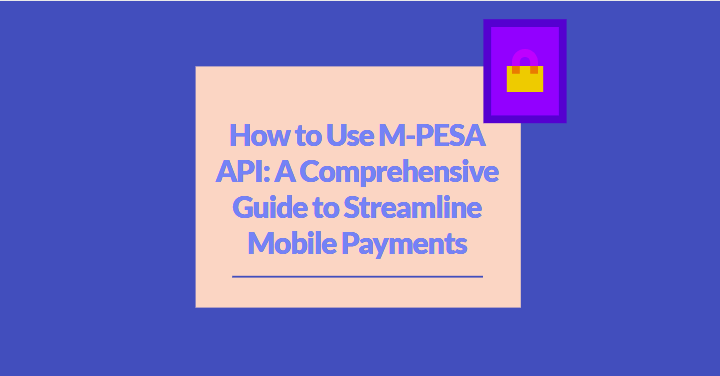
Visits: 0
How to Use M-PESA API: A Comprehensive Guide to Streamline Mobile Payments
Introduction
M-PESA, the revolutionary mobile payment service, has transformed the way people in Kenya conduct financial transactions. To further enhance its capabilities and enable seamless integration with various applications and services, Safaricom, the company behind M-PESA, offers the M-PESA API. This powerful tool allows developers and businesses to incorporate M-PESA functionalities directly into their systems, making mobile payments more accessible and convenient than ever before. In this guide, we will walk you through the process of using the M-PESA API and unleash the potential of frictionless mobile payments.
Understanding the M-PESA API
The M-PESA API is a set of programming interfaces that enable developers to interact with the M-PESA platform programmatically. Through these APIs, developers can initiate payment requests, check transaction status, conduct business transactions, and perform various other financial operations seamlessly.
Prerequisites
Before diving into using the M-PESA API, there are a few prerequisites to consider:
- M-PESA Account: You need to have a registered and active M-PESA account to access the API. If you don’t have one, visit the nearest Safaricom retail shop or agent to create an M-PESA account.
- Developer Account: To obtain access to the M-PESA API, you must sign up for a developer account on the Safaricom Developer Portal (https://developer.safaricom.co.ke/). Once registered, you will receive the necessary credentials and documentation to get started.
- Programming Knowledge: Basic knowledge of programming languages like Python, Java, or PHP will be helpful in integrating the API into your application.
Steps to Use the M-PESA API
Step 1: Obtain API Credentials
Log in to your developer account on the Safaricom Developer Portal and navigate to the M-PESA API section. Obtain the API key, API secret, and the short code that will be associated with your application.
Step 2: Set Up Your Environment
Ensure that you have the necessary development environment set up on your computer, including the programming language of your choice and any required libraries or SDKs provided by Safaricom.
Step 3: Choose the Appropriate API
Depending on your specific use case, choose the relevant M-PESA API from the available options. Common APIs include:
- C2B (Customer to Business): For payment collection from customers.
- B2C (Business to Customer): For disbursing payments to customers.
- B2B (Business to Business): For conducting business transactions between companies.
Step 4: Implement the API
Integrate the chosen API into your application using the provided documentation and code samples. Safaricom’s developer portal offers comprehensive guides and reference materials to help you through this process.
Step 5: Test and Deploy
Before deploying your application to production, thoroughly test the integration in a controlled environment. Safaricom provides sandbox environments for testing and debugging.
Step 6: Monitor and Maintain
Once your application is live, regularly monitor its performance and transaction status. Safaricom’s developer portal offers tools for monitoring API usage and analytics.
Best Practices for Using the M-PESA API
To ensure a smooth and secure experience while using the API, follow these best practices:
- Error Handling: Implement robust error-handling mechanisms to gracefully manage any unforeseen issues and prevent application crashes.
- Security: Protect sensitive API credentials and use secure communication protocols (HTTPS) to safeguard data during transmission.
- User Experience: Design your application with an intuitive user interface to enhance the customer experience during payment interactions.
- Transaction Verification: Always verify transaction details before processing payments to avoid erroneous transactions.
- Testing: Conduct extensive testing to identify and fix any bugs or issues before making the application live.
Conclusion
The M-PESA API opens up a world of possibilities for developers and businesses, enabling them to leverage the power of mobile payments in their applications. By following the steps outlined in this guide and adhering to best practices, you can seamlessly integrate functionalities and provide your users with a frictionless and secure mobile payment experience. Embrace the M-PESA API and unlock the true potential of mobile payments in Kenya and beyond.


%20(1).png)


